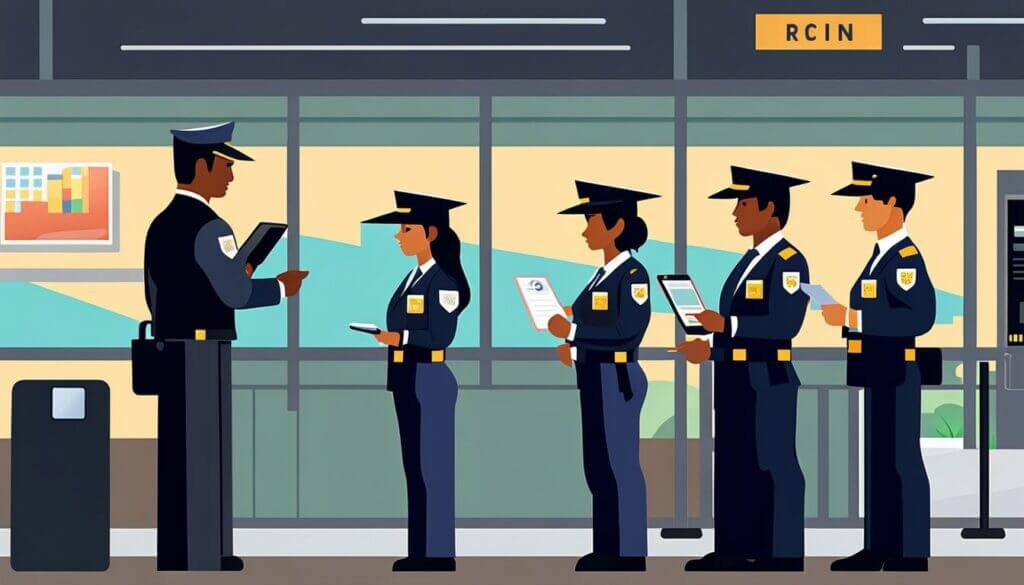In response to the challenges and the urgent need to address the current migration crisis, the United States took a crucial and unprecedented step. In this regard, the Biden Administration decided to send specialized officials to control the entry of immigrants in Panama.
Through this strategic collaboration, the government would seek not only to streamline immigration control processes, but also to strengthen ties between the two nations. What impact will this measure have? At Jaskot Law, the team will analyze in detail how this initiative will influence immigration management.
Collaboration to strengthen control of immigrants in Panama
Biden will send a team of U.S. immigration officials to Panama from agencies such as the U.S. Citizenship and Immigration Services (USCIS), and the Immigration and Customs Enforcement (ICE). According to government officials:
“… the main objective of this measure is to provide training and technical assistance to Panamanian officials to optimize the processing of asylum applications and the deportation of those who do not meet the legal requirements.”
This collaboration seeks, in essence, to strengthen Panama’s capacity to manage an exceptional migratory flow to the Darién Gap. With 64.3% of the 481,432 migrants arriving via the Darién jungle, the diversity of nationalities involved and the complexity of the challenge facing the Central American country is evident.

Why would this measure represent a positive step?
Biden emphasizes that the collaboration has a two-pronged approach: granting humanitarian protection to legally eligible migrants and tightening controls to deport those who do not qualify. This balance would seek to guarantee respect for human rights and ensure that migration policies are rigorously enforced.
Funding for this initiative will come from State Department funds, marking a financial commitment on the part of the United States to support the collaboration. However, the actual implementation of the effort will depend on the finalization of a formal agreement between the two countries.
Keeping abreast of migration developments affecting the Americas is crucial to know how to act. Jaskot Law provides you with the necessary details so that you have all the updated information.
Biden’s implied importance of immigration control
The U.S.-Panama collaboration is part of the Biden administration’s broader efforts to stem the flow of migrants along the southern border with Mexico. In fact, it reached record numbers with more than 2 million apprehensions by the Border Patrol.
This strategy demonstrates the dire need for joint and regional actions to address the migration phenomenon in a comprehensive manner. In this way, it is also recognized that local solutions are insufficient in the face of the magnitude of the challenge, making the collaboration of both governments essential.

Conclusion
The collaboration between the United States and Panama to strengthen immigrant control in Panama and stem the flow of migrants marks a significant step in the search for solutions for the region. The combination of training, technical assistance and financial support demonstrates a comprehensive and cooperative approach.
However, the effectiveness of this measure will depend on the successful implementation of the agreements and the continued commitment of both nations to address a problem that transcends individual borders. If you need more information, at Jaskot Law, the team will provide you with the latest news on immigration matters.
Sources
United States Citizenship and Immigration Services (USCIS)
Immigration and Customs Enforcement (ICE)
Frequently Asked Questions
How does immigration control in the region affect the safety and well-being of migrants?
According to Human Rights Watch reports, movement restrictions imposed by U.S.-backed governments in the Americas have forced thousands of people to take more dangerous routes, such as the Darién crossing, increasing the risks to migrants’ safety and well-being.
What additional challenges does Panama face in managing migration flows beyond collaboration with the U.S.?
Panama faces logistical and humanitarian challenges in managing the migration flow, including the need for additional resources to house and provide basic services to migrants. Collaboration with the U.S. seeks to address some of these challenges, but the situation requires a comprehensive approach.
How does the migratory flow impact Panama’s economy and resources?
Increased migration flows may put pressure on Panama’s resources and economy by requiring greater investments in infrastructure, services and social programs. Collaboration with the U.S. not only addresses humanitarian aspects, but also seeks to alleviate this economic burden.
How is collaboration between U.S. agencies and Panamanian authorities on the ground coordinated?
The coordination involves the deployment of a team of U.S. officials with experience in processing asylum applications. This team will work directly with Panamanian authorities by providing them with training and technical assistance in immigration control in the Darién Gap.

